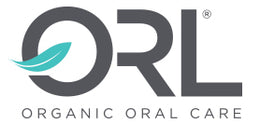Ever wonder what’s really hiding in your toothpaste? You should. From traditional household brands through emerging natural toothpaste makers, manufacturers routinely include “harmful” ingredients in their formulas. We’ve pulled their ingredient lists and put them up against PubChem, a database of chemical information provided by the National Institute of Health (NIH). Using this data from the American government’s official medical research agency, we identified more than 100 harmful ingredients. Here’s a look at the top four.
1. Sodium Lauryl Sulfate (SLS)
Often shortened to SLS, sodium lauryl sulfate is typically used to help toothpaste glide over your teeth better or to create the foam. However, it also changes the way flavors are perceived, which can result in the horrible taste you get while drinking orange juice, coffee, and other beverages after brushing.
PubChem Warnings: Harmful if swallowed. Harmful with skin contact. Harmful if inhaled. Causes severe skin burns and eye damage. Flammable.
2. Triclosan
The FDA actually banned Triclosan in sanitizers and soaps because they couldn’t prove it was safe to use over a long period of time, noting that it’s been linked to skin cancer and thyroid issues. The Mayo Clinic says it should probably be avoided too. Yet, it continues to be mixed into toothpaste and other products as an antibacterial agent to this day.
PubChem Warnings: Causes skin irritation. Causes serious eye irritation. Toxic to aquatic life.
3. Hydrated Silica
Silica is essentially sand, though it can be made from a variety of sources. The American Dental Association (ADA) uses the measurement of “relative dentin abrasivity” (RDA) to ensure products aren’t so abrasive that they’ll damage teeth and gums. However, research shows that, even when specialized toothpaste for sensitive teeth is used, which has a much lower RDA than traditional toothpastes, the abrasivity impacts how well the toothpaste works as a desensitizing agent.
PubChem Warnings: Causes irritation eyes, pneumoconiosis.
4. Glycerin
Many toothpastes get their creamy texture from glycerin. It’s used to help a substance retain water and can make toothpaste glide over teeth better too. That said, it will attract moisture from whatever its closest source is, even if that means drying out your tissues to get it. “This can dehydrate the skin, even to the point of blistering,” Healthline cautions.
PubChem Warnings: Skin, eye and respiratory irritant.
Find Out What’s in Your Toothpaste and Mouthwash
The ingredients highlighted here are found in lots of toothpastes and mouthwashes, but they’re not found in ORL. We’ve taken a mindful approach to our offerings, creating perfectly neutral 7.0 pH formulas that help balance your mouth for optimal oral health, while adding natural and wholesome ingredients like cavity-fighting organic xylitol, plant-based essential oils, and vitamins and minerals, so your smile gets the nourishment it needs. But, if you’re using another brand, you just might be exposing yourself and your family to one of these or more than 100 other harmful ingredients every day. Use our free online tool, which draws information directly from PubChem, to explore what’s hiding in your toothpaste and mouthwash.



